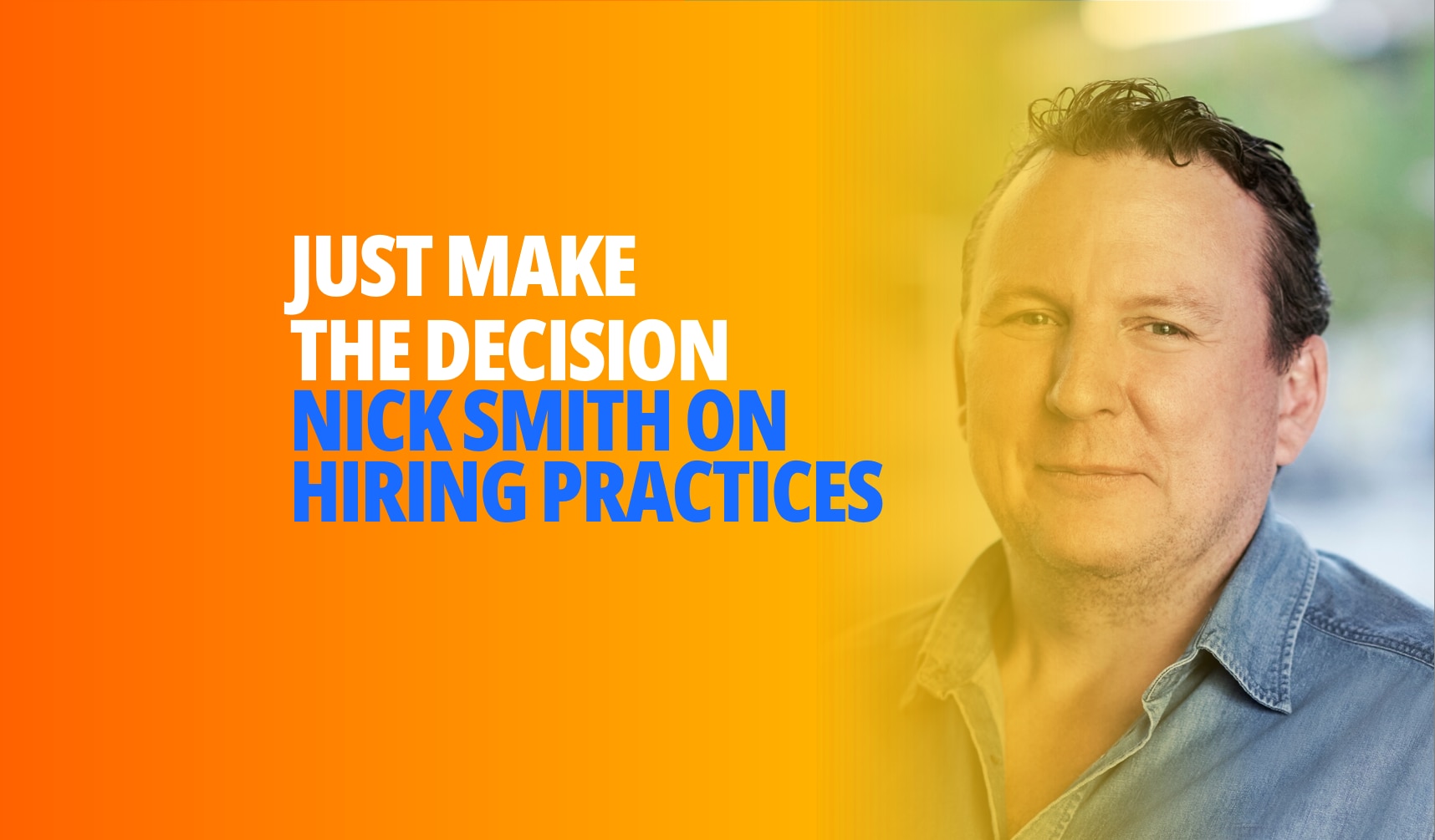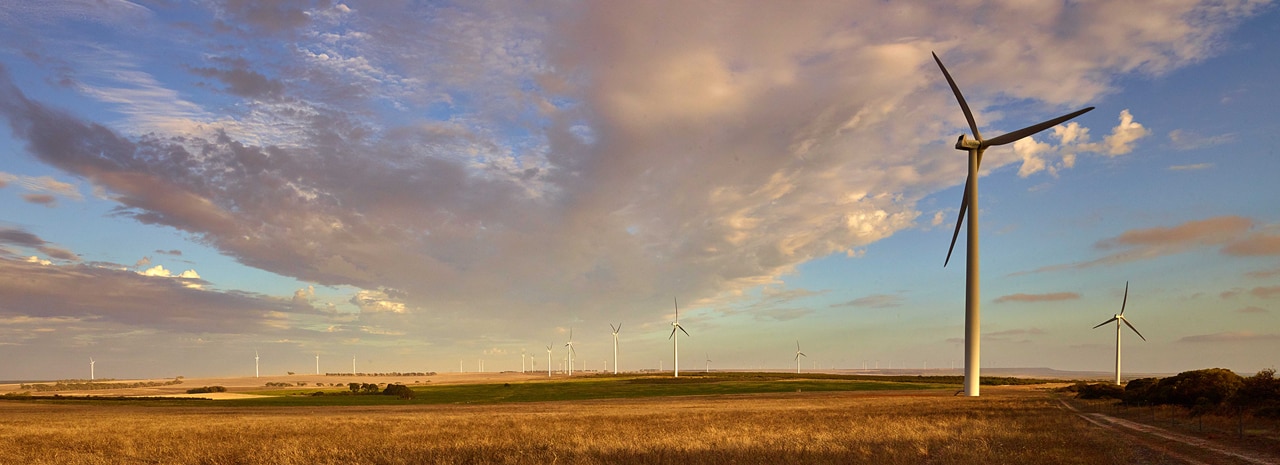Being Honest
About where Australia’s
energy comes from.
Alinta Energy MD & CEO Jeff Dimery's speech to Australian Energy Week 2022

Good morning, everyone.
I’ve chosen a bit of a provocative title for today because I want to do my best to step outside my comfort zone and talk to you as much about feelings and aspirations as I do engineering and economics – because they’re equally important.
So, here’s some feel good information to start us off.
We’ve moved from about one per cent generation being renewable in 2006 to more than 20 per cent in 2020 and 2021 – and it’s more like 30 today.
That’s incredible, that’s positive, and we can see that the subsidies and Renewable Energy Target have been worthwhile, and outcome of that is the terrific reduction in emissions that has been achieved.
And here’s some information that’s maybe going to make you feel frustrated with me or the world.
The 30 odd per cent that we’ve achieved was the easy part. We’ve reached an inflection point – it’s a bit like, ‘congratulations you’ve nearly reached base camp on Mount Everest, but now you have to climb the actual mountain’.
It’s going to get way, way, way harder from this point on.
So, standing at the proverbial base of Mt Everest and looking up at the mountain, what’s going on externally?
- There’s a war on, fuel shortages, labour shortages, and price spikes
- Inflation is going nuts – the price of lithium doubled during two years of the pandemic
- Lazard says the cost curve for renewables and storage isn’t coming down like it was a few years ago. We may be approaching the limits of how cheap some technologies can be
And meanwhile market operators are having to intervene in the NEM more than ever before, the electorate is becoming more and more impatient for change and progress, the ESG demands on companies are accelerating, and the science is telling us to act yesterday.
The natural question to ask then, is can we get this done in 7.5, 15, 20 years?
I think I can speak for others when I say the things we feel strongly about at Alinta Energy are not energy generation technologies. We don’t love wind, we don’t love gas or solar or coal or batteries – but we are proud of our work with those technologies and we’re proud of what they deliver for our customers.
What fires us up is solving problems for our customers and the community, and delivering better solutions and outcomes. And I think that is, in so many different ways, the right approach.
We get fired up about emissions reductions – and delivering them for an affordable price as part of a reliable energy system.
One of the company’s proudest achievements is the work we’ve done in the Pilbara, unencumbered by the challenges of the NEM.
We took an ambitious brief from our customer Fortescue Metals Group, and helped them to displace 100 million litres of diesel annually with a solar-gas hybrid project called Chichester, which can cover up to 100 per cent of their daytime energy needs for the Cloudbreak and Christmas Creek mines, and is also backed up by a battery at our Newman Power Station.
We think this is the largest remote solar installation in WA if not Australia. And the solution we’ve put in place is operating like the world’s best orchestras – you can see in this chart the parts working together in harmony as a cloud comes over the solar field and we drop 40 MW, and instantly we can see a smooth ramp up of the grid-forming battery and gas to cover the load, and the frequency is maintained there in the middle.
In my opinion this is one of the best examples of reducing emissions and dealing with intermittency on a decent-sized customer load in Australia. But…. You can see what happens if a cloud comes over the array. And you can guess what happens at night. So, we need to plug in wind, and even then, and even with more batteries, we won’t have a 100 per cent renewable network.
And again – this is in the Pilbara, which is unencumbered by the challenges of the NEM. We could only do this because we were the market operator, the modeller, the forecaster, transmission operator, the builder – all of those things at once. And we had a clear and ambitious brief from the customer.
Of course, in the NEM it’s the opposite:
- The goal and brief are unclear: we’re delivering to different state targets
- There’s a constant threat of government interventions that, for example, might kick the legs out from under your forecast revenue stream
- It’s hard to forecast or trust the forecasts, because, for example, there’s no plan for coal exits (and instead we see ad hoc solutions or like the Yallourn deal in Victoria or the Eraring announcement)
- Renewables are getting harder to build with many of the best sites for wind and solar gone, and developments are being made more difficult by NIMBYism (which extends to transmission as well)
- And the market doesn’t incentivise/reward critical firming capacity and system services
On top of this AEMO predicts renewables supply to increase 3-fold from ~50TWh pa to over 150TWh pa by 2035, most of which will be required to replace retiring coal fired generation – this represents 10 times the historical build rates. I’m going to say that again…. It’s 10 times the historical build rate.
Now that is really daunting, and, if we continue on current trajectory of welcoming in more and more intermittent generation without addressing the underlying weaknesses in the NEM – I think we could be in a very dark place, pardon the pun, in a few years’ time.
One of the most contentious areas of debate in the energy industry I think is expressing the view that intermittency is a problem and that renewables are exacerbating the problem.
The blowback that you get is usually swift and loud and amplified through the media which have sold papers and subscriptions based on a conflict narrative… it’s like rival bumper stickers that read: “I heart renewables” vs “honk if you love coal”.
And I think we’ve been circling around this space and conflict narrative for some time, partly because there’s been a leadership vacuum. And I don’t lay this at the feet of the former federal government – I think there has been a global leadership vacuum on solutions for the next stage of the transition because it’s an incredibly complex problem.
However intermittency is a known problem… it’s the devil we know. So why haven’t we bedded down the solutions to balance it out?
The number one most efficient and short-term fix for intermittency is protecting and incentivising the right amount of synchronous generation and critical system services from the private sector. Shoring up gas and coal for a period of time, but not a second longer than we need to, is critical.
And what this graph shows is that thermal is exiting and not being replaced, and the vast majority of new build is wind and solar.
I think renewables are terrific at lowering emissions, but of course a stable and reliable grid is also critical.
Everyone in this room should already understand on the most basic level that our grid was designed for big motors and big spinning magnets to provide constant inertia, frequency and system strength, so that eventually when you turn on a light in your house it’s stable….so it doesn’t look like a scene from a horror movie when they’ve discovered the house is haunted and ghosts are trying to communicate with the new owners of the house.
And those big spinning magnets, whirring away in the background, are going to be absolutely critical to the transition, until inverter-based technologies can be better utilised to help stablise the grid and we’ve also nailed the technologies that will fill the gaps (be it hydrogen or otherwise).
And, by the way, for an example of better utilising inverters look no further than our Chichester solar farm where we use the solar inverters to help stabilise the grid overnight.
Every market report these days is quick to start the exec summary with ‘this year saw record influx of wind, solar and rooftop solar’ – but what isn’t as obvious is the influx of medium and long duration storage, or synchronous generation, to match.
Instead, what’s called out repeatedly is the problems in search of solutions – more minimum demand events with lower minimum demand, more VoLL events, more market operator interventions, more weak spots in the grid, and more call outs in reports like this one from the AER’s 2021 State of the Energy Market report:
“Coal and gas powered generators also provide the market with inertia and system strength which help stabilise the grid. The reduction in output from these plants as renewables expand has meant the transmission network is more susceptible to erratic frequency shifts and voltage instability. Shortages of system strength have emerged in South Australia and Tasmania, and parts of Victoria and Queensland.”
They might as well just say across the NEM.
Now, I have one more doom and gloom section before I start to turn this around so bear with me while we reflect on the consequences of not solving these issues for a minute.
Here are some very crude numbers for you...
If average annual operational electricity consumption remains steady at around 200TWh (rounded up for ease of calculation) in the NEM, every $5 MWh avg increase in wholesale prices would add roughly $1b of additional cost of electricity into the market.
Move from $70 Mwh to $90 MWh and there’s a $4 bil tab to pick up. And the impact of that isn’t shared evenly… with contracts and vertically integrated businesses you’ll probably find that retail customers won’t do as badly, while those with exposure to spot prices will obviously get disproportionately hammered.
On 18 May when I sat down to write this speech, at 12.30pm the Vic spot price was $174, cheaper than it had been in the week prior – but obviously $100 more expensive than averages for the year prior. $100 extra a year in the average price per MWh of electricity is a $20 billion direct hit to the economy via elevated electricity prices. And that’s without getting into indirect impacts.
And sure what’s occurring at the moment is geopolitical, and do to with supply issues and international prices for coal and gas.
But even when these weren’t occurring, the consequences of getting the transition wrong have been clear to me.
Take South Australia for example, which is an interesting example because outwardly the claim is that there’s a linear relationship between more renewables equal lower prices.
“What fires us up is solving problems for our customers and the community, and delivering better solutions and outcomes. And I think that is, in so many different ways, the right approach.“
But if you read the initial findings of South Australia’s Productivity Commission investigation, there’s a disconnect between low wholesale prices and high (some of the highest in the country) retail prices.
They say that “…plausible trajectories for additional renewable energy generation in South Australia are likely to worsen the current disconnect between average spot prices and the prices actually paid by electricity users.
And that “without reforms such as additional competition in the on-demand generation market, or changes to the regulatory structure of the NEM, there is no reason to expect expanded renewable generation to deliver substantial reductions in South Australian retail prices.”
Does that surprise me? No. I think it’s spot on.
All the additional solar and wind unfortunately hasn’t changed the physics of the grid – it still needs inertia to be maintained, system strength to be maintained, and it comes at a cost.
And we need to encourage competition in that space to drive down the additional costs required to complement and support renewables.
And this is a problem that will show up around other government interventions. If you don’t have the markets and incentives and signals for competition in dispatchable supply... or worse… if you intervene and put others off from investing – we’ll get more of the same.
So here’s my hopeful take on the way forward...
I think AEMO, the ESB, the AER and others have done a great job given the circumstances in which they have operated for the past decade.
And there is a laundry list of critical reforms that they will need to implement as soon as possible, like a capacity mechanism, additional markets for essential system services, and a proper closure plan for coal.
I read the Victorian Energy Policy Centre’s proposal last week for a renewable energy storage target to function like the RET. Something like that could have merit, and I think it’s good that we’re working towards solutions for the same problem, but I think there’s a bigger picture here.
If we’re serious about our emissions targets, wind and solar are going to be a big part of the solution, but not the only show in town.
Paul McArdle from WattClarity recently wrote about low wind conditions we experienced across the entire country on Friday May 27, and looked back to a multi-week ‘wind drought’ we experienced in 2017. These are things that should be front and centre of our thinking about how to transition from this point on.
We have to get out of the binary bumper sticker debate – and redirect that energy and advocacy into the big missing pieces.
And those missing pieces are nation-building investments in clean fuels and technologies, and supply chains and markets, that will deliver us energy independence and generation that complement intermittent renewables.
Yes hydro, hydrogen, and biofuels, and potentially some that have been shelved or exist only on the margins of our conversation today.
For our part we are also taking a different approach to our competitors.
We believe that we have a responsibility to ensure we exhaust every option to create or transition to a like for like replacement for the dispatchable supply that is due to be retired before 2050.
We are becoming clearer that the value we can bring to the market is transitioning from baseload of the past, to better baseload and renewables for the transition, to a generation portfolio that includes a significant chunk of deep storage for the future.
So what does that mean for us?
In the case of Loy Yang B we’re looking at the possibility of converting the plant to run on cleaner alternative fuels, or to be able to blend fuels. And while it is early days for that investigation, which I would characterise as being at a conceptual due diligence phase, it’s something we’re very serious about.
It’s also why we’re progressing the Oven Mountain Pumped Hydro project – which we believe will be critical to the deep storage equation in New South Wales.
But we’re going to need a lot more. AEMO says we’ll need 45 GW and 620GWh of additional storage for 2050 – about 10 Snowys, which by the way took 25 years to build.
And if it’s not 10 Snowys, we’re going to need to set up supply chains, create new markets, and fast track planning to give other technologies a fighting chance.
In 1918 the Victorian Government established the State Electricity Commissioners Victoria to exploit the brown coal reserves of the Latrobe Valley.
After the war in and over 25 years between 1949 and 1974, the federal government took the lead on building the Snowy Hydro project.
And throughout the early years of our energy history there are examples of private companies leading the way as well. The Mount Bischof Tin Mining company built the first hydro power station in Tasmania in 1883 and the Perth Gas Company set up the first commercial gas supply in 1894.
That is the scale of the vision and ambition we need to tap into to successfully transition to a low carbon energy system.
The history of Australia’s energy system is one of remarkable feats of engineering and ingenuity, massive investments and ambition… but it was ambition that was focussed on ensuring Australia had energy independence, affordability and reliability.
The route to a more resilient grid that is better able to handle more intermittent generation is not more of the same. We know what the issues are, so let’s fix them.
We need to recapture that nation building feeling and spirit, with a focus on lowering our emissions, to deliver a better energy system for Australia.




